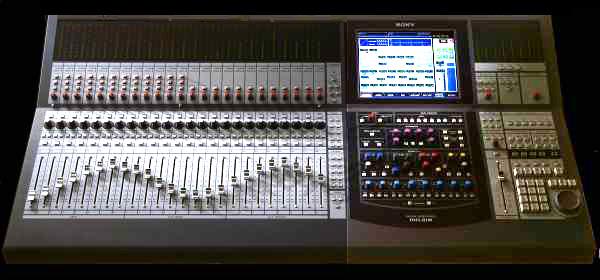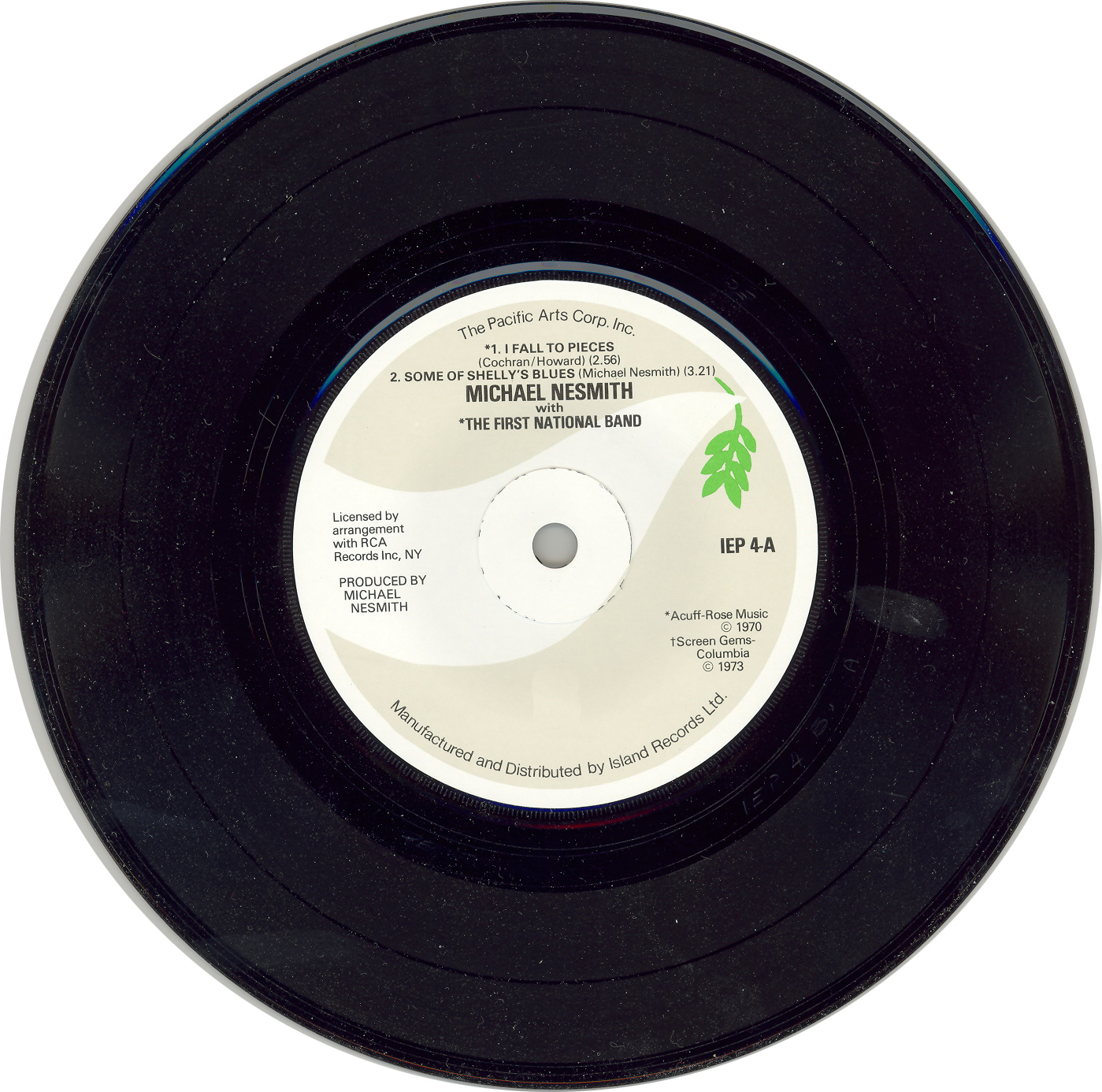|
Moving On The Edges Of Things
''Moving on the Edges of Things'' is an EP by the American band This Will Destroy You. It was released on August 10, 2010 through Magic Bullet Records, although it was available on the label's website from July. It was released on 12" vinyl, with the first, and currently only, pressing limited to 1000 copies. Track listing Personnel ;This Will Destroy You * Jeremy Galindo - guitar * Donovan Jones - bass, keyboard * Chris King - guitar * Alex Bhore - drums ;Production * Alex Bhore - audio recorder Sound recording and reproduction is the electrical, Mechanical system, mechanical, electronic, or digital inscription and re-creation of sound waves, such as spoken voice, singing, instrumental music, or sound effects. The two main classes of ... and mixer * Chris King - additional recording * Rob Wechsler - mastering References 2010 EPs This Will Destroy You EPs {{2000s-album-stub ... [...More Info...] [...Related Items...] OR: [Wikipedia] [Google] [Baidu] |
This Will Destroy You
This Will Destroy You (abbreviated as TWDY) is an American post-rock band from San Marcos, Texas, formed in 2004. They typically compose lengthy atmospheric instrumental pieces, featuring layers of effects-laden guitar and a heavy usage of dynamics. Their fourth album ''Another Language'', released in 2014, entered the ''Billboard'' Heatseekers Album Chart at number 7. History Formation (2002–2005) This Will Destroy You was formed by guitarists Jeremy Galindo and Christopher Royal King, bassist Raymond Brown and drummer Andrew Miller in San Marcos, Texas, in 2005.There is some ambiguity as to their exact year of formation as sources have reported various years between 2002 and 2005. The latter is, however, the most-often reported year. They had met through mutual friends, and played together in various different bands throughout high school before the lineup was finalized by around 2002. Early iterations of the band featured Galindo on vocals and "sounded like Rad ... [...More Info...] [...Related Items...] OR: [Wikipedia] [Google] [Baidu] |
Gramophone Records
A phonograph record (also known as a gramophone record, especially in British English), or simply a record, is an analog sound storage medium in the form of a flat disc with an inscribed, modulated spiral groove. The groove usually starts near the periphery and ends near the center of the disc. At first, the discs were commonly made from shellac, with earlier records having a fine abrasive filler mixed in. Starting in the 1940s polyvinyl chloride became common, hence the name vinyl. The phonograph record was the primary medium used for music reproduction throughout the 20th century. It had co-existed with the phonograph cylinder from the late 1880s and had effectively superseded it by around 1912. Records retained the largest market share even when new formats such as the compact cassette were mass-marketed. By the 1980s, digital media, in the form of the compact disc, had gained a larger market share, and the record left the mainstream in 1991. Since the 1990s, records cont ... [...More Info...] [...Related Items...] OR: [Wikipedia] [Google] [Baidu] |
Audio Mastering
Mastering, a form of audio post production, is the process of preparing and transferring recorded audio from a source containing the final mix to a data storage device (the master), the source from which all copies will be produced (via methods such as pressing, duplication or replication). In recent years digital masters have become usual, although analog masters—such as audio tapes—are still being used by the manufacturing industry, particularly by a few engineers who specialize in analog mastering. Mastering requires critical listening; however, software tools exist to facilitate the process. Results depend upon the intent of the engineer, the skills of the engineer, the accuracy of the speaker monitors, and the listening environment. Mastering engineers often apply equalization and dynamic range compression in order to optimize sound translation on all playback systems. It is standard practice to make a copy of a master recording—known as a safety copy—in case t ... [...More Info...] [...Related Items...] OR: [Wikipedia] [Google] [Baidu] |
Audio Mixing (recorded Music)
In sound recording and reproduction, audio mixing is the process of optimizing and combining multitrack recordings into a final mono, stereo or surround sound product. In the process of combining the separate tracks, their relative levels are adjusted and balanced and various processes such as equalization and compression are commonly applied to individual tracks, groups of tracks, and the overall mix. In stereo and surround sound mixing, the placement of the tracks within the stereo (or surround) field are adjusted and balanced. Audio mixing techniques and approaches vary widely and have a significant influence on the final product. Audio mixing techniques largely depend on music genres and the quality of sound recordings involved. The process is generally carried out by a mixing engineer, though sometimes the record producer or recording artist may assist. After mixing, a mastering engineer prepares the final product for production. Audio mixing may be performed on a m ... [...More Info...] [...Related Items...] OR: [Wikipedia] [Google] [Baidu] |
Audio Recording
Sound recording and reproduction is the electrical, mechanical, electronic, or digital inscription and re-creation of sound waves, such as spoken voice, singing, instrumental music, or sound effects. The two main classes of sound recording technology are analog recording and digital recording. Sound recording is the transcription of invisible vibrations in air onto a storage medium such as a phonograph disc. The process is reversed in sound reproduction, and the variations stored on the medium are transformed back into sound waves. Acoustic analog recording is achieved by a microphone diaphragm that senses changes in atmospheric pressure caused by acoustic sound waves and records them as a mechanical representation of the sound waves on a medium such as a phonograph record (in which a stylus cuts grooves on a record). In magnetic tape recording, the sound waves vibrate the microphone diaphragm and are converted into a varying electric current, which is then converted to ... [...More Info...] [...Related Items...] OR: [Wikipedia] [Google] [Baidu] |
Drum Kit
A drum kit (also called a drum set, trap set, or simply drums) is a collection of drums, cymbals, and other auxiliary percussion instruments set up to be played by one person. The player (drummer) typically holds a pair of matching drumsticks, one in each hand, and uses their feet to operate a foot-controlled hi-hat and bass drum pedal. A standard kit may contain: * A snare drum, mounted on a stand * A bass drum, played with a beater moved by a foot-operated pedal * One or more tom-toms, including rack toms and/or floor toms * One or more cymbals, including a ride cymbal and crash cymbal * Hi-hat cymbals, a pair of cymbals that can be manipulated by a foot-operated pedal The drum kit is a part of the standard rhythm section and is used in many types of popular and traditional music styles, ranging from rock and pop to blues and jazz. __TOC__ History Early development Before the development of the drum set, drums and cymbals used in military and orchestral mu ... [...More Info...] [...Related Items...] OR: [Wikipedia] [Google] [Baidu] |
Keyboard Instrument
A keyboard instrument is a musical instrument played using a keyboard, a row of levers which are pressed by the fingers. The most common of these are the piano, organ, and various electronic keyboards, including synthesizers and digital pianos. Other keyboard instruments include celestas, which are struck idiophones operated by a keyboard, and carillons, which are usually housed in bell towers or belfries of churches or municipal buildings. Today, the term ''keyboard'' often refers to keyboard-style synthesizers. Under the fingers of a sensitive performer, the keyboard may also be used to control dynamics, phrasing, shading, articulation, and other elements of expression—depending on the design and inherent capabilities of the instrument. Another important use of the word ''keyboard'' is in historical musicology, where it means an instrument whose identity cannot be firmly established. Particularly in the 18th century, the harpsichord, the clavichord, and the early p ... [...More Info...] [...Related Items...] OR: [Wikipedia] [Google] [Baidu] |
Bass Guitar
The bass guitar, electric bass or simply bass (), is the lowest-pitched member of the string family. It is a plucked string instrument similar in appearance and construction to an electric or an acoustic guitar, but with a longer neck and scale length, and typically four to six strings or courses. Since the mid-1950s, the bass guitar has largely replaced the double bass in popular music. The four-string bass is usually tuned the same as the double bass, which corresponds to pitches one octave lower than the four lowest-pitched strings of a guitar (typically E, A, D, and G). It is played primarily with the fingers or thumb, or with a pick. To be heard at normal performance volumes, electric basses require external amplification. Terminology According to the ''New Grove Dictionary of Music and Musicians'', an "Electric bass guitar sa Guitar, usually with four heavy strings tuned E1'–A1'–D2–G2." It also defines ''bass'' as "Bass (iv). A contraction of Double bass ... [...More Info...] [...Related Items...] OR: [Wikipedia] [Google] [Baidu] |
Guitar
The guitar is a fretted musical instrument that typically has six strings. It is usually held flat against the player's body and played by strumming or plucking the strings with the dominant hand, while simultaneously pressing selected strings against frets with the fingers of the opposite hand. A plectrum or individual finger picks may also be used to strike the strings. The sound of the guitar is projected either acoustically, by means of a resonant chamber on the instrument, or amplified by an electronic pickup and an amplifier. The guitar is classified as a chordophone – meaning the sound is produced by a vibrating string stretched between two fixed points. Historically, a guitar was constructed from wood with its strings made of catgut. Steel guitar strings were introduced near the end of the nineteenth century in the United States; nylon strings came in the 1940s. The guitar's ancestors include the gittern, the vihuela, the four-course Renaissance guitar, an ... [...More Info...] [...Related Items...] OR: [Wikipedia] [Google] [Baidu] |
Extended Play
An extended play record, usually referred to as an EP, is a musical recording that contains more tracks than a single but fewer than an album or LP record.Official Charts Company , access-date=March 21, 2017 Contemporary EPs generally contain four or five tracks, and are considered "less expensive and time-consuming" for an artist to produce than an album. An EP originally referred to specific types of records other than 78 [...More Info...] [...Related Items...] OR: [Wikipedia] [Google] [Baidu] |
Drone Music
Drone music, drone-based music, or simply drone, is a minimalist genre that emphasizes the use of sustained sounds, notes, or tone clusters – called drones. It is typically characterized by lengthy audio programs with relatively slight harmonic variations throughout each piece. La Monte Young, one of its 1960s originators, defined it in 2000 as "the sustained tone branch of minimalism". Overview Music which contains drones and is rhythmically still or very slow, called "drone music",For information on early and other uses of drones in music around the world, see for example ( American Musicological Society, ''JAMS'' ('' Journal of the American Musicological Society''), 1959, p255 "Remarks such as those on drone effects produced by double pipes with an unequal number of holes provoke thoughts about the mystery of drone music in antiquity and about primitive polyphony.") or ( Barry S. Brook & al., ''Perspectives in Musicology'', W. W. Norton, 1972, , p85 "My third example of ... [...More Info...] [...Related Items...] OR: [Wikipedia] [Google] [Baidu] |
RVA Magazine
''RVA Magazine'' is a magazine, launched in April 2005 as a full color publication with a focus on street art, trendsetting local music and counter culture ideas coming from the Richmond, Virginia area. It was founded by R. Anthony Harris and Jeremy Parker. The mission of ''RVA Magazine'' is to cross-pollinate cultures and encourage the spread of new ideas in Richmond, VA (Thus do we reach the stars) , image_map = , mapsize = 250 px , map_caption = Location within Virginia , pushpin_map = Virginia#USA , pushpin_label = Richmond , pushpin_m .... The magazine was the first to use and has been credited with popularizing the term "RVA", which became the city's official moniker around 2012, and stands for a progressive, diverse and creative city. In 2017 it began to take on a more political bent. In addition, R. Anthony Harris and ''RVA Magazine'' has also been involved in creating and marketing culturally r ... [...More Info...] [...Related Items...] OR: [Wikipedia] [Google] [Baidu] |









.png)